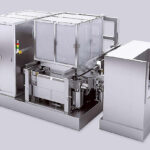ASIA ELECTRONICS INDUSTRYYOUR WINDOW TO SMART MANUFACTURING
TSMC, Ansys Partner for Secure Multiphysics Analysis
Ansys has joined TSMC‘s OIP Cloud Alliance to facilitate the deployment of fully distributed workflows for mutual customers. Accordingly, driving Ansys’ multiphysics solutions with TSMC’s technology enablement, customers can gain the full benefits of faster run times and elastic computing with major cloud vendors.
Combining EDA parallelism and cloud scalability, TSMC and its OIP Cloud Alliance partners are creating next-generation, cloud-optimized design methodologies. Hence, further accelerating turnaround time of critical design tasks.
Ansys and other EDA partners will optimize their tools for multi-threaded, fully-distributed runs to best utilize cloud. This as cloud partners bring new virtual machines most suitable for the EDA workload of IC designs.

Multiphysics Signoff Solutions
“Our customers of all sizes are leveraging the cloud to boost productivity while designing in TSMC’s leading-edge technologies for new applications from high performance computing to mobile, artificial intelligence, networking, and 3D-IC,” said Dan Kochpatcharin, head of the Design Infrastructure Management Division at TSMC.
In addition, Kochpatcharin said, “By welcoming Ansys as the latest member into our OIP Cloud Alliance, TSMC aims to make Ansys’ leading multiphysics signoff solutions available to all of our customers and help them bring their differentiated products to market sooner, with higher quality.”
Ansys was an early adopter of elastic cloud computing with its SeaScape big-data platform – a cloud-native data infrastructure. Specifically, the platform suits for EDA. Ansys® RedHawk-SC™ was the first tool built to work with SeaScape (SC). Hence, many other Ansys semiconductor tools have followed, including Ansys® PathFinder-SC™, Ansys® Totem-SC™, and Ansys® PowerArtist-SC™.
“Ansys’ strategy for the future foresees an absolutely central role for cloud computing,” said John Lee, vice president and general manager of the semiconductor, electronics, and optics business unit at Ansys. “We have invested heavily in cloud-enabled platforms that give our products clear advantages in speed and capacity over traditional tool environments that were not designed for the cloud.”




